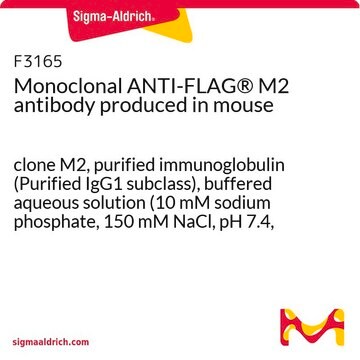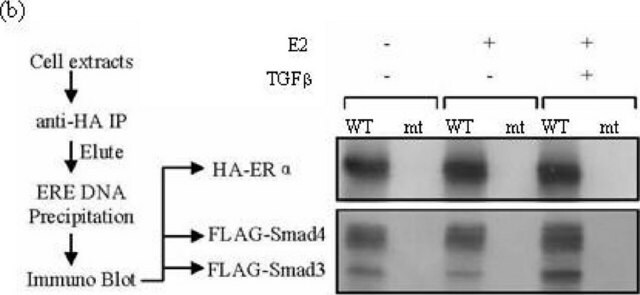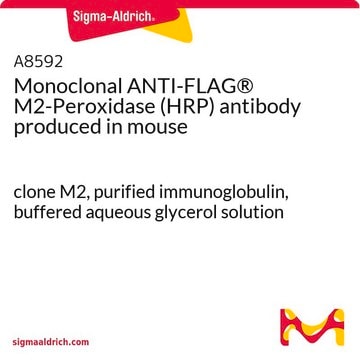Monoclonal Anti-HA antibody clone HA-7 is mouse IgG1, kappa light chain.
Wichtige Dokumente
H6533
Monoklonaler ANTI-HA-Antikörper
clone HA-7, purified from hybridoma cell culture
Synonym(e):
Anti-HA, Anti-Influenza-Hämagglutinin
Größe auswählen
1.310,00 €
Versandbereit am07. April 2025Details
Größe auswählen
About This Item
1.310,00 €
Versandbereit am07. April 2025Details
Empfohlene Produkte
Biologische Quelle
mouse
Qualitätsniveau
Konjugat
peroxidase conjugate
Antikörperform
purified from hybridoma cell culture
Antikörper-Produkttyp
primary antibodies
Klon
HA-7, monoclonal
Form
lyophilized powder
Verpackung
vial of 0.5 mL
Konzentration
5-11 mg/mL
Methode(n)
western blot: 1:4,000 using using HA tagged fusion protein expressed in bacteria, and ECL immunoblotting detection reagent
Lagertemp.
2-8°C
Suchen Sie nach ähnlichen Produkten? Aufrufen Leitfaden zum Produktvergleich
Allgemeine Beschreibung
Spezifität
Immunogen
Anwendung
- in immunopreciptation and immunostaining of human member 9 of solute carrier family 38 SLC38A9 transfected in HeLa cells[3]
- in immunoblot detection in transfected A375 cells[4]
- is suitable for immunoblotting of nucleosome assembly protein NAP1L1[5]
Physikalische Form
Angaben zur Herstellung
Sie haben nicht das passende Produkt gefunden?
Probieren Sie unser Produkt-Auswahlhilfe. aus.
Signalwort
Warning
H-Sätze
Gefahreneinstufungen
Skin Sens. 1
Lagerklassenschlüssel
12 - Non Combustible Liquids
WGK
WGK 2
Flammpunkt (°F)
Not applicable
Flammpunkt (°C)
Not applicable
Hier finden Sie alle aktuellen Versionen:
Analysenzertifikate (COA)
Die passende Version wird nicht angezeigt?
Wenn Sie eine bestimmte Version benötigen, können Sie anhand der Lot- oder Chargennummer nach einem spezifischen Zertifikat suchen.
Besitzen Sie dieses Produkt bereits?
In der Dokumentenbibliothek finden Sie die Dokumentation zu den Produkten, die Sie kürzlich erworben haben.
Kunden haben sich ebenfalls angesehen
-
What is the isotype and light chain for Monoclonal Anti-HA antibody clone HA-7 produced in mouse?
1 Antwort-
Hilfreich?
-
-
What is the Department of Transportation shipping information for this product?
1 Antwort-
Transportation information can be found in Section 14 of the product's (M)SDS.To access the shipping information for this material, use the link on the product detail page for the product.
Hilfreich?
-
Aktive Filter
Unser Team von Wissenschaftlern verfügt über Erfahrung in allen Forschungsbereichen einschließlich Life Science, Materialwissenschaften, chemischer Synthese, Chromatographie, Analytik und vielen mehr..
Setzen Sie sich mit dem technischen Dienst in Verbindung.













